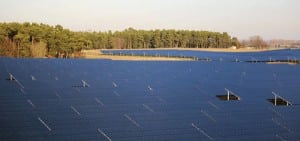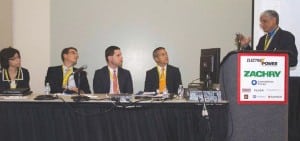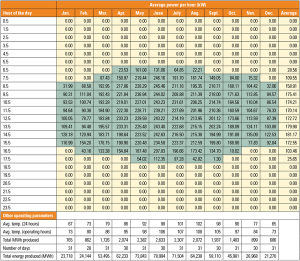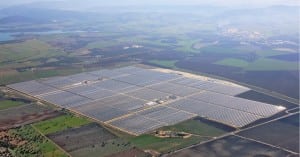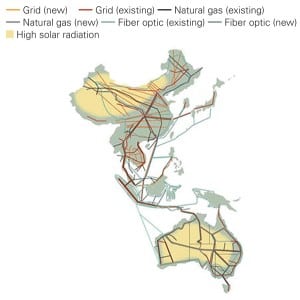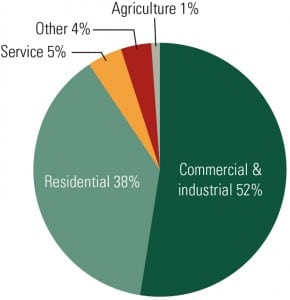Solar
-
Solar
Solar Trade Tensions Intensify as China Launches Polysilicon Dumping Probe
Global solar trade tensions escalated on Friday as the Ministry of Commerce of the People’s Republic of China announced it would launch both anti-dumping and countervailing investigations on imports of solar-grade polysilicon from the U.S. and an anti-dumping probe on South Korean polysilicon imports. Germany on Friday, meanwhile, said it would support its solar industry in anti-dumping action against China.
-
Solar
Large Thin-Film CIS Plant Goes Online in Germany
In May—as a trade war raged between Chinese solar panel manufacturers and exporters and their counterparts in the U.S. and the European Union concerning the world’s plummeting crystalline silicone photovoltaic module prices—a 28.8-MW thin-film copper indium gallium (di)selenide (CIGS or CIS) solar power plant came online. Developers Solar Frontier, the world’s largest manufacturer of CIS […]
-
Coal
Power in India: Opportunities and Challenges in a Fast-Growing Market
India’s long-term annual economic growth rate is projected at over 7%, and the country is investing in its hydroelectric, nuclear, and renewable resources. However, the primary fuel used to produce electricity remains coal, and the government has ambitious plans to significantly increase coal-fired capacity. Those plans have been challenged by a number of unexpected factors that threaten to stifle India’s economic growth. India’s long-term annual economic growth rate is projected at over 7%, and the country is investing in its hydroelectric, nuclear, and renewable resources. However, the primary fuel used to produce electricity remains coal, and the government has ambitious plans to significantly increase coal-fired capacity. Those plans have been challenged by a number of unexpected factors that threaten to stifle India’s economic growth.
-
Hydro
Utility Perspectives on Ramping Up Renewable Power
Panelists at ELECTRIC POWER discussed how U.S. utilities choose renewable power generation technologies based on their geographic locations, state requirements, economics, and other criteria—including reliability and federal regulations.
-
Solar
Boosting CSP Production with Thermal Energy Storage
Combining concentrating solar power (CSP) with thermal energy storage shows promise for increasing grid flexibility by providing firm system capacity with a high ramp rate and acceptable part-load operation. When backed by energy storage capability, CSP can supplement photovoltaics by adding generation from solar resources during periods of low solar insolation.
-
Solar
Think Water When Designing CSP Plants
The operation of solar thermal power plants differs substantially from that of fossil-fired plants, as the sun determines the generation rather than market demand. However, design of the power island to minimize water usage is very similar to that of a fossil plant. This renewable technology requires renewed thinking of its water systems’ design.
-
Solar
Large China Energy Storage Project Begins Operation
Chinese state entity State Grid Corp. of China (SGCC) and battery maker BYD in January said they had finished construction on what they call “the world’s largest battery energy storage station”—a project in Zhangbei, Hebei Province that combines 100 MW of wind and 40 MW of solar capacity, a smart power transmission system, and 36 MWh of energy storage in arrays “larger than a football field.”
-
Solar
Spain Inaugurates Two More Parabolic Trough Units
Two identical 50-MW parabolic trough plants with thermal storage in Cadiz, in the south of Spain, began operating this January.
-
Gas
Desertec Ambitions Turn to Asia, Australia
The ambitious Desertec project—a $9 billion initiative to develop, harness, and transmit 2,000 MW of renewable power from North Africa and the Middle East to Europe by 2050—has been trumped by a vaster concept that spans Asia and Australia.
-
Coal
Vietnam Works Hard to Power Economic Growth
For the past 15 years, Vietnam has enjoyed enviable gross domestic product increases, averaging 7% annually. That kind of economic growth increases power demand, but financing new capacity remains a challenge. Reaching its ambitious capacity growth goals will require Vietnam to expand its financing and vendor base, attract foreign investment, and ensure future fuel supplies in a region thick with competition for those resources.

